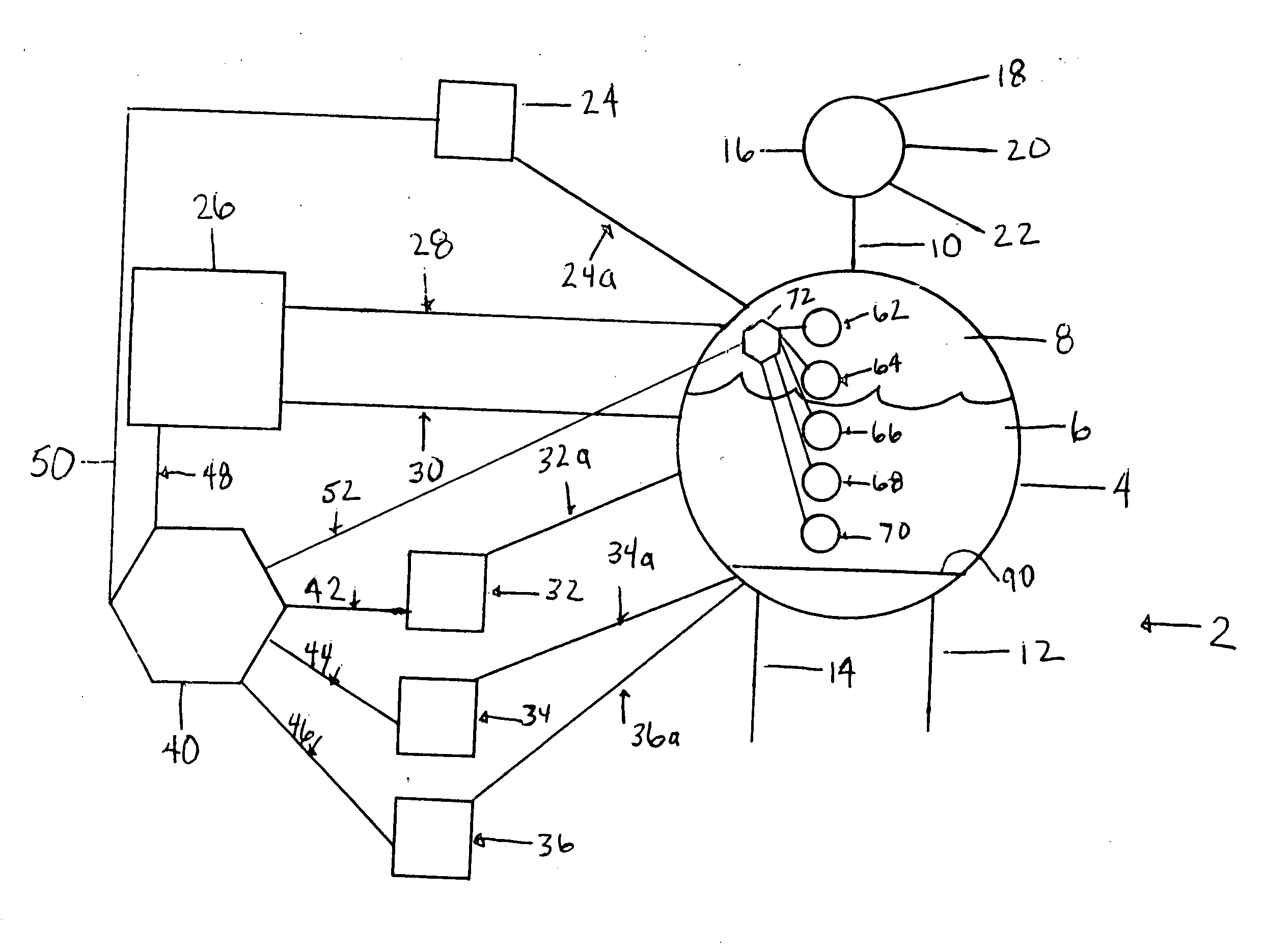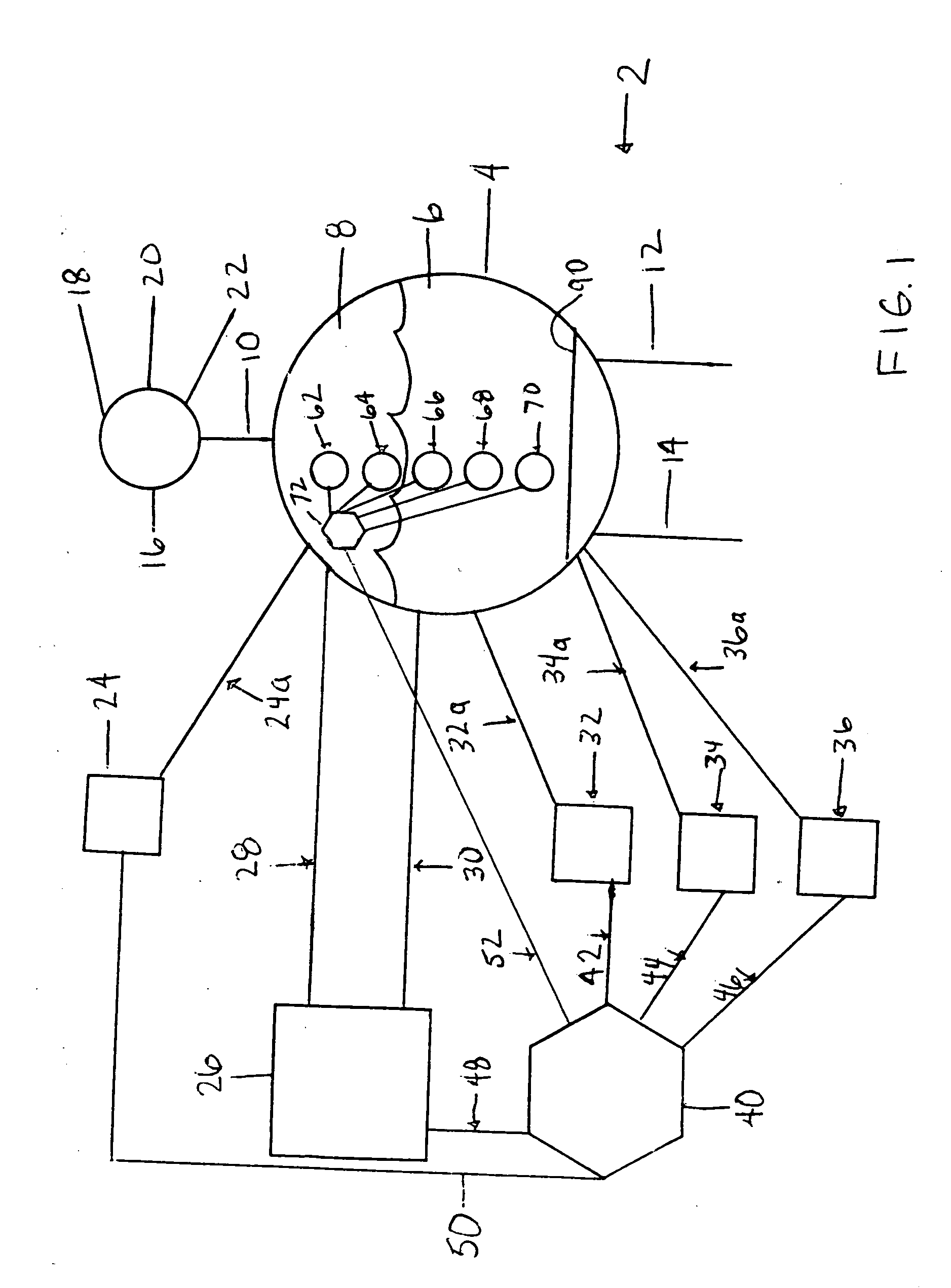Biomass treatment of organic waste or water waste
a biomass treatment and organic waste technology, applied in the field of organic waste, water waste, organic contaminants, etc., can solve the problems of waste or contamination materials being disposed of, landfills face a limitation on space, and require significant energy
- Summary
- Abstract
- Description
- Claims
- Application Information
AI Technical Summary
Problems solved by technology
Method used
Image
Examples
Embodiment Construction
[0022]It is to be noted that the treatments processes of the technology described herein should be directed primarily at organic waste treatment, which may come from a wide variety of sources. Preferred organic materials come from more readily definable and consistent composition waste sources such as industrial, commercial, and recycled wastes. This assists in assuring that materials are present that are not treated by the biomass or should not be introduced into the biomass, such as metals (even in high concentrations in dissolved or organically tied or chelated form), toxins (especially materials that would be toxic to bacteria, such as pesticides), and non-digestible materials that would tend to collect in the biomass without digestion or decomposition. It is possible to provide a venting / discharge system for such non-digestible materials, but as noted, it is preferred to avoid introduction of significant amounts (e.g., greater than 0.5%, greater than 0.2%, or greater than 0.05%...
PUM
| Property | Measurement | Unit |
|---|---|---|
| Concentration | aaaaa | aaaaa |
| Content | aaaaa | aaaaa |
| Chemical oxygen demand (mass) | aaaaa | aaaaa |
Abstract
Description
Claims
Application Information
 Login to View More
Login to View More - R&D
- Intellectual Property
- Life Sciences
- Materials
- Tech Scout
- Unparalleled Data Quality
- Higher Quality Content
- 60% Fewer Hallucinations
Browse by: Latest US Patents, China's latest patents, Technical Efficacy Thesaurus, Application Domain, Technology Topic, Popular Technical Reports.
© 2025 PatSnap. All rights reserved.Legal|Privacy policy|Modern Slavery Act Transparency Statement|Sitemap|About US| Contact US: help@patsnap.com


